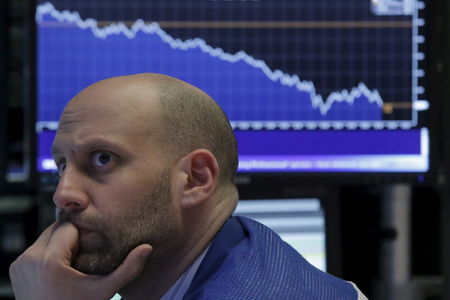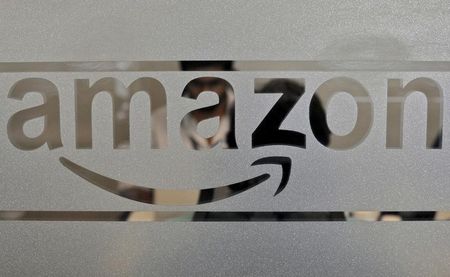Uncategorized
The dollar is almost equal in value to the euro. Here are the upsides and downsides


The U.S. dollar has been surging so much that it’s nearly equal in value to the euro for the first time in 20 years. That trend threatens to hurt American companies because their goods become more expensive for foreign buyers. If U.S. exports were to weaken as a result, so too would the already-slowing U.S. economy.
Yet there’s a positive side for Americans too: A stronger buck provides modest relief from runaway inflation because the vast array of goods that are imported to the U.S. — including cars, computers, toys and medical equipment — become less expensive. A strengthened dollar also delivers bargains to American tourists sightseeing in Europe.
The U.S. Dollar Index, which measures the value of American money against six major foreign currencies, has jumped nearly 12% this year to a two-decade high. The euro is now worth slightly less than $1.02.
The dollar is climbing mainly because the Federal Reserve is raising interest rates more aggressively than central banks in other countries are in its effort to cool the hottest U.S. inflation in four decades. The Fed’s rate increases cause yields on U.S. Treasurys to rise, which attracts investors seeking richer yields than they can get elsewhere in the world. This increased demand for dollar-denominated securities, in turn, boosts the dollar’s value.
Also contributing to the currency’s appeal, Rubeela Farooqi of High Frequency Economics said, is that despite concern about a potential recession in the United States, “the U.S. economy is on firmer footing compared to Europe.”
Not since July 15, 2002, has the euro been valued at less than $1. On that day, the euro blew past parity with the dollar as huge U.S. trade deficits and accounting scandals on Wall Street pulled down the U.S. currency.
This year, the euro has sagged largely because of growing fears that the 19 countries that use the currency will sink into recession. The war in Ukraine has magnified oil and gas prices and hurt European consumers and businesses.
In particular, Russia’s recent reduction in natural gas supplies has sent prices skyrocketing and raised fears of a total cutoff that could force governments to ration energy to industry to spare homes, schools and hospitals. (European leaders have denounced Moscow’s move as an effort to punish Europe for backing Ukraine and embracing Western sanctions in response to Russia’s invasion.)
Economists at Berenberg bank have calculated that at current rates of consumption the added gas bill would be 220 billion euros ($224 billion) over 12 months, or a whopping 1.5% of annual economic output.
“This war is a ‘body-blow’ to Europe,” Robin Brooks, chief economist at the Institute of International Finance banking trade group, tweeted this week. “It undercuts Germany’s growth model that’s based on cheap Russian energy. Europe is facing a seismic shift, and [the] euro needs to fall to reflect that.”
A European slowdown could eventually give the European Central Bank less leeway to raise rates and moderate economic growth to address its own inflation problem. The ECB has announced that it will raise its key interest rate by a quarter of a point when it meets later this month and possibly by up to half a point in September. A weaker euro feeds inflationary pressures by making imports to Europe more expensive.
Analysts at UniCredit said global recession fears were a prime driver in foreign exchange markets “amid the general view that the Fed might ultimately have more opportunity than many other central banks” to raise rates. The analysts also noted the dollar’s role as a globally recognized haven as another factor that’s boosting demand for the buck.
The dollar’s rise is complicating an already uncertain outlook for the United States, the world’s biggest economy. The stronger greenback makes foreign goods less expensive for Americans and eases inflationary pressures. But not by much.
Mark Zandi, chief economist at Moody’s Analytics, calculates that a 10% rise in the dollar over the last year, against the currencies of its trading partners, reduced inflation by about 0.4 percentage point. Though Zandi calls that a “meaningful” effect, he said consumer prices have soared 8.6% over the last year, the biggest year-over-year gain since 1981.
And a sturdier currency takes a toll on U.S. companies that do business overseas. For one thing, it erodes the profits of multinational companies that rely on overseas sales. The stronger dollar makes their foreign revenue worth less when they convert it to dollars and bring it home to the United States. Microsoft, for example, last month downgraded the outlook for its April-to-June earnings “due to unfavorable foreign exchange rate movement.”
Worse, a stronger dollar makes U.S.-made products more expensive in overseas markets, while giving foreign products a price edge in the United States.
“The stronger dollar,” Zandi said, “weighs on [economic] growth as it results in reduced exports, more imports and thus a wider trade deficit.”
Indeed, a growing trade gap subtracted 3.2 percentage points from U.S. economic growth in the January-to-March period. That was the main reason why the nation’s gross domestic product — the broadest gauge of economic output — shrank at a 1.6% annual rate in the first quarter.
Economists say the risk of recession is already rising in the United States as the Fed raises borrowing costs and consumers deplete the savings they built up during the pandemic.
“The strength of the dollar,” said Eswar Prasad, an economist at Cornell University and the Brookings Institution, “will certainly do no favors for U.S. exporters.’’
This story originally appeared in Los Angeles Times.
Uncategorized
BofA Securities maintains Amazon.com at ‘buy’ with a price target of $154.00
Uncategorized
Six people in critical condition, one still missing after Paris blast – prosecutor

5/5
© Reuters. French firefighters and rescue forces work after several buildings on fire following a gas explosion in the fifth arrondissement of Paris, France, June 21, 2023. REUTERS/Gonzalo Fuentes
2/5
PARIS (Reuters) – Six people remained in a critical condition and one person was believed still missing on Thursday, one day after a blast ripped through a street near Paris’ historic Latin Quarter, the city’s public prosecution office said. “These figures may still change,” prosecutor Maylis De Roeck told Reuters in a text message, adding that around 50 people had been injured in the blast, which set buildings ablaze and caused the front of one to collapse onto the street. Of two people initially believed missing, one has been found in hospital and is being taken care of, the prosecutor said, adding: “Searches are ongoing to find the second person.” Authorities have not yet said what caused the explosion, which witnesses said had followed a strong smell of gas at the site. The explosion led to scenes of chaos and destruction in the historic Rue Saint Jacques, which runs from the Notre-Dame de Paris Cathedral to the Sorbonne University, just as people were heading home from work. It also destroyed the facade of a building housing the Paris American Academy design school popular with foreign students. Florence Berthout, mayor of the Paris district where the blast occurred, said 12 students who should have been in the academy’s classrooms at the time had fortunately gone to visit an exhibition with their teacher.
“Otherwise the (death toll) could have been absolutely horrific,” Berthout told BFM TV. She said three children who had been passing by at the time were among the injured, although their lives were not in danger.
Uncategorized
4 big analyst cuts: Alcoa & DigitalOcean shares drop on downgrades

© Reuters.
Here is your Pro Recap of the biggest analyst cuts you may have missed since yesterday: downgrades at Alcoa, DigitalOcean, Teleflex, and Xcel Energy.InvestingPro subscribers got this news in rapid fire. Never be left in the dust again.Alcoa stock drops on Morgan Stanley downgrade Alcoa (NYSE:) shares fell more than 3% pre-market today after Morgan Stanley downgraded the company to Underweight from Equalweight and cut its price target to $33.00 from $43.00, as reported in real time on InvestingPro.The firm sees a significant decline in consensus estimates, and as negative earnings revisions materialize, it believes the stock will face downward pressure and underperform.The analyst’s estimates for EBITDA in Q2, 2023, and 2024 are substantially lower than the consensus. The stock is currently trading above its historical average. The firm said its downward revisions in earnings estimates and price target are attributed to the company’s high operating leverage to aluminum prices.DigitalOcean stock plunges on downgradePiper Sandler downgraded DigitalOcean (NYSE:) to Underweight from Neutral with a price target of $35.00. As a result, shares plunged more than 5% pre-market today.The company reported its last month, with revenue beating the consensus estimate, while EPS coming in worse than expected. Furthermore, the company provided a strong outlook, which was above the Street estimates.2 more downgradesTeleflex (NYSE:) shares fell more than 3% yesterday after Needham downgraded the company to Hold from Buy, noting that UroLift expectations may still be too high.According to Needham, their checks indicate that urologists are reducing their use of UroLift due to its retreatment rates, reimbursement cuts, and increasing use of competing procedures. This is also supported by their Google Trends data analysis, which indicates decreasing search interest in UroLift.BMO Capital downgraded Xcel Energy (NASDAQ:) to Market Perform from Outperform and cut its price target to $64.00 from $69.00 to reflect the lower-than-expected terms of the company’s regulatory settlement in Colorado.Amid whipsaw markets and a slew of critical headlines, seize on the right timing to protect your profits: Always be the first to know with InvestingPro.Start your free 7-day trial now.

 Forex3 years ago
Forex3 years agoForex Today: the dollar is gaining strength amid gloomy sentiment at the start of the Fed’s week

 Forex3 years ago
Forex3 years agoUnbiased review of Pocket Option broker

 Forex3 years ago
Forex3 years agoDollar to pound sterling exchange rate today: Pound plummeted to its lowest since 1985

 Forex3 years ago
Forex3 years agoHow is the Australian dollar doing today?

 Cryptocurrency3 years ago
Cryptocurrency3 years agoWhat happened in the crypto market – current events today

 World3 years ago
World3 years agoWhy are modern video games an art form?

 Commodities3 years ago
Commodities3 years agoCopper continues to fall in price on expectations of lower demand in China

 Economy3 years ago
Economy3 years agoCrude oil tankers double in price due to EU anti-Russian sanctions






















